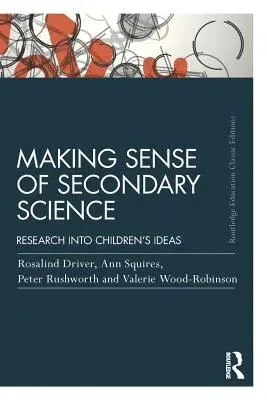What ideas do children hold about the natural world?
How do these ideas affect their learning of science?
Young learners bring to the classroom knowledge and ideas about many
aspects of the natural world constructed from their experiences of
education and from outside school. These ideas contribute to
subsequent learning, and research has shown that teaching of science is
unlikely to be effective unless it takes learners' perspectives into
account.
Making Sense of Secondary Science provides a concise, accessible
summary of international research into learners' ideas about science,
presenting evidence-based insight into the conceptions that learners
hold, before and even despite teaching. With expert summaries from
across the science domains, it covers research findings from life and
living processes, materials and their properties and physical processes
This classic text is essential reading for all trainee secondary,
elementary and primary school science teachers, as well as those
researching the science curriculum and science methods, who want to
deepen their understanding of how learners think and to use these
insights to inform teaching strategies. It also provides a baseline
for researchers wishing to investigate contemporary influences on
children's ideas and to study the persistence of these conceptions.
Both components of Making Sense of Secondary Science - this book and
the accompanying teacher's resource file, Making Sense of Secondary
Science: Support materials for teachers - were developed as a result of
a collaborative project between Leeds City Council Department of
Education and the Children's Learning in Science Research Group at the
University of Leeds, UK.

